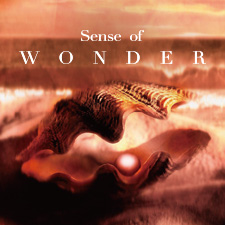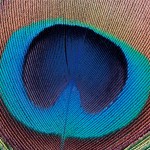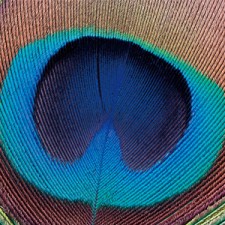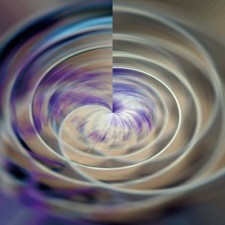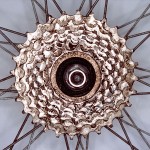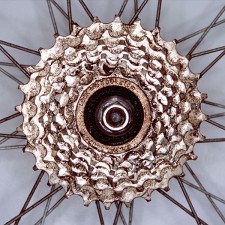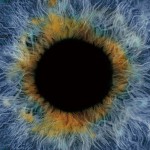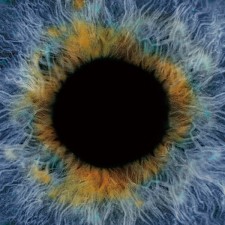◉ The most mysterious creature known to mankind is probably man himself. Never mind total strangers, even the actions and preferences of those closest to you are sometimes completely inscrutable, and for that matter, there are plenty of things you can’t really seem to understand about yourself. Indeed, this very desire to “understand” everything is one of the puzzling habits of humans. It is when you try to understand things that wonder arises.
◉ Maybe it all has to do with the reckless growth of the human brain. The major characteristic of humans as mammals is that they walk upright on two legs. There are various hypotheses as to how this came to be, for instance that our ancestors evolved from living in the forest to living on the savannah, or that they spent one period living in the sea. Anyhow, with the hands now free to use tools, the brain was prompted to grow, or so the theory goes. A radically different idea about the enlargement of the brain is the locomotion hypothesis, which claims that a larger brain evolved because it made walking and running smoother: a large brain makes the head heavier and the balance unstable, which in turn enables speedier and smoother motion forwards. If this hypothesis is correct, the human brain evolved as a counterweight, and started “thinking” only long afterwards.
◉ That may not be the reason why, but the human brain seems to have produced an endless series of traits that at first glance seem unrelated to biological survival. According to the neuroscientist Paul MacLean, the major feature of the human brain is that it enables us to cry, laugh and play. Laughter in particular is a uniquely human behavior. Chimpanzees also display a behavior similar to laughter, but humans are the only ones who laugh outright. Furthermore, humans laugh not only when they are happy or having fun. We may laugh to show contempt, or when we are angry, even when we are sad. Perhaps man should be called the only animal that can laugh without being happy. Let’s not forget, however, the medical utility of laughter. It is well known that laughter improves immunity, and there are reports that it is effective in the treatment of diabetes too.
◉ Why do people have to sleep? That is a question every workaholic has pondered. Sleep seems like such a waste of time, doesn’t it? And when we sleep, we are totally defenseless as well. Humans are of course not the only animals that sleep, but there appear to be animals that do not sleep at all. As the sleep science pioneer Allan Rechtschaffen once said, “if sleep doesn’t serve an absolutely vital function, it is the biggest mistake evolution ever made.” The reason why we sleep is usually assumed to be “because we are tired,” but actually there is little evidence that fatigued human tissue recovers during sleep.
◉ Maybe we sleep in order to dream, but this obviously begs the question of why we dream. The consensus among scientists is that dreaming has something to do with processing information that has been input and stored in the brain, but once again, no concrete evidence of this has been discovered so far. An explanation of wondrous dream phenomena like precognitive dreams or apparitions remains, well, beyond our wildest dreams. Subjectively, there isn’t even any way to distinguish dream from reality.
◉ There is one thing that everybody experiences, yet nobody knows what it’s like, and usually nobody thinks about it. Death. The questions of why people (and other living creatures) have to die probably arose with the birth of consciousness. Since time immemorial, people have tried all sorts of methods and remedies to conquer death. However, far from attaining immortality, nobody has even succeeded in stretching the upper limit of the human lifespan (approximately 120 years).
◉ In fact, the cause of aging is still unclear. One theory has it that aging is programmed into our genes, while another claims that aging is caused by oxygen that enters the body when we breathe – or, in other words, that aging is caused by the act of living itself. It used to be believed that single-celled creatures could divide endlessly and so had eternal life, but it has now been confirmed that for example paramecia die after around 350 divisions.
◉ In humans and other multi-cellular organisms, cell division stops when the so-called telomeres at the end of the chromosomes wear down, and it is said that if some enzyme works to extend the telomeres, the cell becomes immortal. One example of such cells that do not die is cancer cells. In any case, life and death seem to be two sides of the same coin. If humans were to achieve eternal life, the population would explode, and the resulting stress and food-supply crisis would probably bring about the extinction of the whole species. Perhaps this is the main reason why there are no immortal creatures after all.






